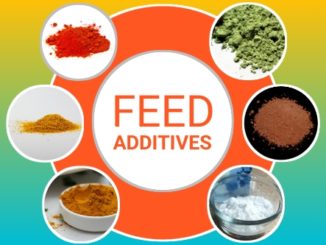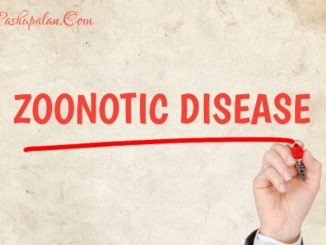The pancreas has exocrine and endocrine components, with the exocrine part and accompanying arteries, nerves, and ducts accounting for 98 percent of total pancreatic mass. The exocrine and endocrine pancreas serve two distinct functions in the dog. Acinar cells, which synthesize digesting enzymes, and cells that make up the duct system within a pancreatic lobule make up pancreatic lobules. Islets of Langerhans, which form anastomosing cords nested in the pancreatic lobules and are intimately connected with acinar cells, make up the endocrine pancreas. Within the islets, there are four separate polypeptide-secreting islet cell types: glucagon-producing cells, insulin-producing cells, and glucagon-secreting cells.
Exocrine pancreatic insufficiency (EPI) is a syndrome that is characterized by decreased production or secretion of digestive enzymes by the pancreas with associated maldigestion. EPI causes malassimilation of nutrients (fats, carbs, proteins, vitamins, and trace elements), bacterial proliferation in the small intestine, and morphologic and functional abnormalities in the small intestine.
Causes
Potential underlying causes of EPI include: Pancreatic acinar atrophy (most common cause in dogs), Chronic pancreatitis (most common cause in cats), Pancreatic neoplasia, Pancreatic flukes, and Pancreatic hypoplasia. In dogs, the most commonly affected breeds with pancreatic acinar atrophy are the German shepherd dog, the rough-coated Collie, and the Eurasian dog. An autosomal recessive pattern of inheritance has been proposed by pedigree analysis, while more recent research implies a polygenic mode of inheritance. In pancreatic acinar atrophy, an auto-immune-mediated atrophic lymphocytic pancreatitis gradually leads to destruction of the pancreatic acinar tissue. Affected dogs are born with a normal pancreas. The entire pancreas is thin and transparent, and usually, the endocrine pancreas is spared in dogs with pancreatic acinar atrophy.
The most prevalent cause of EPI in cats is chronic pancreatitis, which is the second most common cause in dogs. Chronic pancreatitis appears to be a more common cause of EPI in the Cavalier King Charles Spaniel, as the age of onset of EPI in this breed is substantially older than in German Shepherds with pancreatic acinar atrophy. Over time, chronic pancreatic inflammation causes atrophy and fibrosis. Exocrine tissue is eventually damaged to the point that symptoms appear. Diabetes mellitus may also be present in some dogs.
Pathophysiology
- EPI has a complex pathophysiology. EPI patients are deficient in more than just digestive enzymes. Pancreatic juice also contains additional nutrients that are beneficial to gut health and digestion.
- Digestive enzymes: lack of these enzymes leads to maldigestion, osmotic diarrhea, and bacterial overgrowth.
- Bicarbonate: lack of bicarbonate affects the intraluminal pH of the intestine, which affects the efficacy of brush border enzymes and can contribute to bacterial overgrowth.
- Trophic factors for GI mucosa: lack of trophic factors contributes to malabsorption.
- Intrinsic factor: lack of intrinsic factor leads to hypocobalaminemia as intrinsic factor is required for cobalamin transport in the ileum.
Clinical Signs
- Weight loss with normal to increased appetite.
- Chronically loose stools or diarrhea. Because of the predominant fat maldigestion, the diarrhoea tends to be fatty (steatorrhea), but it varies among individuals.
- Fecal volumes are larger than normal and may be associated with steatorrhea.
- Flatulence and borborygmus are commonly reported, especially in dogs. May show coprophagia and/or pica.
- May be accompanied by polyuria/polydipsia with diabetes mellitus as a sequel to chronic pancreatitis.
- Affected dogs and cats also often have chronic seborrheic skin with a poor-quality hair coat resulting from deficiency of essential fatty acids and cachexia.
- Decreased muscle mass.

Diagnosis
Diagnosis of EPI is based on typical clinical findings and confirmed by abnormal pancreatic function testing. Routine bloodwork (CBC/chemistry) often shows unremarkable changes. Measurement of trypsin-like immunoreactivity is the gold standard for diagnosing EPI in dogs and cats (TLI). Before drawing blood, make sure the patient has been fasting for 12-14 hours. The measurement of serum TLI is species and pancreatic specific. Serum TLI concentrations are dramatically reduced with EPI—dogs: cTLI ≤2.5 μg/L; cats: fTLI ≤8.0 μg/L. Cobalamin and Folate are frequently run as a panel with TLI. • Used to determine if there is a concomitant small intestinal dysbiosis or disease (such as inflammatory bowel disease [IBD]). • Cobalamin (vitamin B12) deficiency is common in both dogs and cats with EPI, and if not addressed, can lead to treatment failure or consequences. Fecal microscopy can be a useful adjunctive diagnostic. Stains such as Sudan or Iodine can stain undigested fat and undigested starch respectively.
Treatment
- While enzyme replacement therapy is the main treatment for EPI, successful management of the EPI patient requires the clinician to balance multiple treatments, particularly in initial stabilization.
- Enzyme replacement therapy is the mainstay of treatment for EPI.
- Microencapsulated products are available; because the lipase is protected from gastric inactivation, a much smaller amount is needed for treatment.
- Viokase-V and Pancreazyme are the recommended brands (porcine origin).
- The starting dose is 1 tsp extract per 10 kg of body weight. Once a patient has responded completely, the dose of enzyme can be slowly tapered to a minimally effective dose.
- Raw pancreas can also be used for enzyme replacement. Raw pancreas may be a more cost effective option for some owners compared to Viokase or Pancreazyme.
- They are a better value as well, since over-the-counter pancreatic enzyme powders have poor potency.
- Beef, pork, sheep or wild game pancreas have all been used in dogs. Roughly 1-3 oz of raw pancreas is equivalent to 1 tsp of pancreatic power. The pancreas can be kept frozen for up to 3 months without loss of enzyme activity.
- Supplementation of cobalamin is recommended if serum cobalamin is in the low normal range (< 300 ng/L).
- Dogs are supplemented with 250-1500 μg SQ weekly for 6 weeks. Cats with 250 μg SQ weekly.
- Antibiotics (e.g., oxytetracycline, tylosin, metronidazole) are required for dogs and cats with EPI with concurrent SIBO. Because of the high prevalence of concomitant bacterial overgrowth and the difficulties in diagnosing it, it is recommended that all newly diagnosed cases receive preventive antibiotics for 3 to 4 weeks.
Dietary management
- A high-quality, easily-digestible maintenance diet is appropriate for more patients.
- The most crucial aspect of EPI is the disruption of fat digestion. Low-fat food has long been advised, but it may not contain enough calories to adequately feed a large-breed dog (such as a German Shepherd Dog). Because fat is more energy dense than carbs, it normally accounts for a large portion of daily calorie intake. Feeding a low fat diet has been recommended.
- Avoiding a high fiber diet has been recommended because fiber inhibits the function of pancreatic enzymes, particularly lipase, and soluble fiber may absorb pancreatic enzymes.
- Hill’s i/d, Royal Canin Digestive Low Fat HE, Eukanuba Intestinal or Dermatosis FP, and other proprietary veterinary diets sold for gastrointestinal disease in dogs meet these parameters and are suggested, at least for initial stabilization.
Recommended readings
- Small Animal Internal Medicine Book by C. Guillermo Couto and Richard W. Nelson
- Textbook of Veterinary Internal Medicine Expert Consult, 8th Edition by Stephen J. Ettinger, DVM, DACVIM, Edward C. Feldman, DVM, DACVIM and Etienne Cote, DVM, DACVIM(Cardiology and Small Animal Internal Medicine)
- Merck Veterinary Manual
| The content of the articles are accurate and true to the best of the author’s knowledge. It is not meant to substitute for diagnosis, prognosis, treatment, prescription, or formal and individualized advice from a veterinary medical professional. Animals exhibiting signs and symptoms of distress should be seen by a veterinarian immediately. |






Be the first to comment